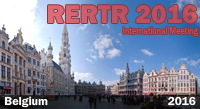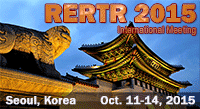Abstracts and Available Papers Presented at the
1999 International RERTR Meeting
RADIATION EXPOSURES ASSOCIATED WITH SHIPMENTS OF FOREIGN RESEARCH REACTOR SPENT NUCLEAR FUEL
C.D. Massey (1), C.E. Messick (2), T. Mustin (3)
(1) Sandia National
Laboratories, P.O. Box 5800, MS-0720, Albuquerque, NM, 87123, United States
(2) U.S. DOE, Savannah River
Site, Aiken, SC, United States
(3) U.S. DOE, Washington,
D.C., United States
Summary
In accordance with the Record of Decision on a Nuclear Weapons Nonproliferation Policy Concerning Foreign Research Reactor Spent Nuclear Fuel (ROD) (DOE, 1996a), the U.S. Department of Energy (DOE) is implementing a 13-year program under which DOE accepts foreign research reactor spent nuclear fuel (SNF) containing uranium that was enriched in the United States. The ROD required that DOE take several steps to ensure low environmental and health impacts resulting from the implementation of the program. These efforts mainly focus on transportation related activities that the analysis of potential environmental impacts in the Environmental Impact Statement on a Proposed Nuclear Weapons Nonproliferation Policy Concerning Foreign Research Reactor Spent Nuclear Fuel (EIS) (DOE, 1996b) identified as having the potential for exceeding current radiation protection guidelines. Consequently, DOE issued a Mitigation Action Plan to reduce the likelihood of potential adverse environmental impacts associated with the policy established in the ROD.
As shown in the EIS, incident-free radiation exposures to members of the ship’s crew, port workers, and ground transportation personnel due to shipments of spent nuclear fuel from foreign research reactors are expected to be below the radiation exposure limit of 100 mrem (1 mSv) per year established to protect the general public. However, the analysis in the EIS demonstrated that port and transportation workers could conceivably receive a cumulative radiation dose above the limit established for the general public if, for example, they are involved in multiple shipments within one year or if the radiation levels outside the casks are at the maximum allowable regulatory limit (10 mrem/hr [0.1 mSv/h] at 2 meters from the surface of the cask).
With the program successfully underway, DOE has collected information from the shipments in accordance with the Mitigation Action Plan. The information to date has demonstrated that the analysis in the EIS of potential impacts associated with marine transport of spent nuclear fuel was very conservative and that actual doses received by workers are much lower than expected. The DOE will continue to monitor cask dose rates and personnel exposure in accordance with the Mitigation Action Plan, but experience has demonstrated that the current practices towards transport of the spent fuel are sufficient for radiation protection purposes. The requirements of the current version of the Mitigation Action Plan reflect the fact that: (1) cask dose rates are much lower than expected, (2) fewer shipments per year are being received, and (3) ship’s crew activities are in practice different than assumed in the EIS. However, the limited number of ships currently available to transport spent nuclear fuel and the potential for exposure of ship’s crew to dose levels in excess of appropriate regulatory limits requires that DOE maintain a Mitigation Action Plan.
![]() PDF version available
PDF version available
DOWNLOAD full paper in PDF format.
Contact:
Charles Massey
Office of Spent Fuel Management
Sandia National Laboratory
PO Box 5800, MS-0720
Albuquerque, NM 87185
Phone: 505 844 4966
Fax: 505 844 0244
E-mail: [email protected]




